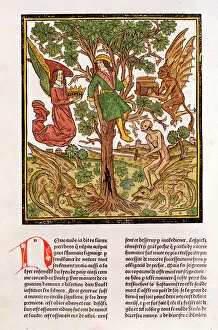Good And Evil Collection (page 15)
"Exploring the Eternal Battle: Good and Evil in Art" Art has long been a mirror reflecting humanity's fascination with the eternal struggle between good and evil
All Professionally Made to Order for Quick Shipping
"Exploring the Eternal Battle: Good and Evil in Art" Art has long been a mirror reflecting humanity's fascination with the eternal struggle between good and evil. From ancient times to modern eras, artists have captured this duality through their masterpieces, leaving us captivated by their profound messages. In Goya's "Witches in Flight, " we witness an eerie scene where darkness prevails as witches soar through the night sky. Their presence evokes a sense of malevolence, reminding us that evil can manifest itself in various forms. Contrasting this is "The Entry of the Animals into Noah's Ark, " a biblical depiction by an unknown artist from 1613. Here, goodness triumphs over chaos as animals peacefully gather under Noah's guidance, symbolizing hope amidst destruction. Edvard Munch's haunting painting "The Vampire II" delves into the seductive allure of evil. The vampire represents temptation and corruption, reminding us of our vulnerability to darker forces lurking within ourselves. Michelangelo's masterpiece "The Expulsion from Paradise" captures Adam and Eve being banished from Eden after succumbing to temptation. This iconic fresco serves as a cautionary tale about the consequences of yielding to wickedness. Fuseli’s "The Weird Sisters (The Three Witches)" transports us into Shakespearean tragedy, where supernatural beings manipulate human destinies for sinister purposes. It reminds us that even seemingly insignificant choices can lead down treacherous paths if influenced by malevolent forces. Rembrandt van Rhijn’s tender portrayal in "Jacob Blessing Ephraim and Manasseh" showcases familial love overcoming adversity—a testament to goodness prevailing against all odds. Sir Edward Coley Burne-Jones' mesmerizing artwork depicts St George slaying a dragon—an allegory for courageously battling one's inner demons or external evils threatening society at large.



